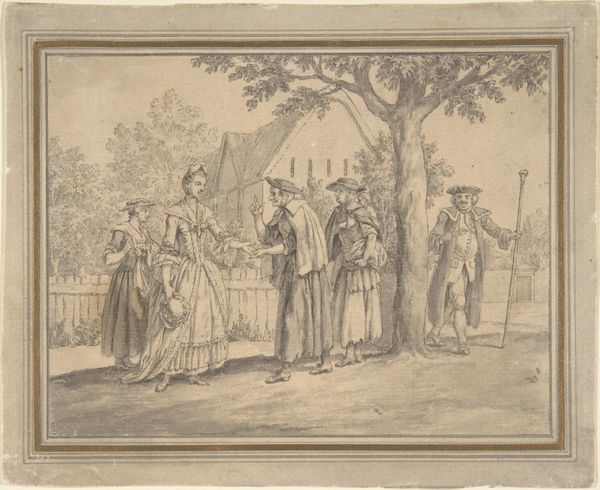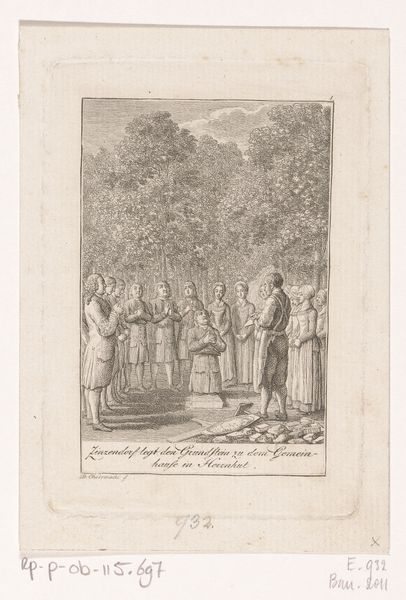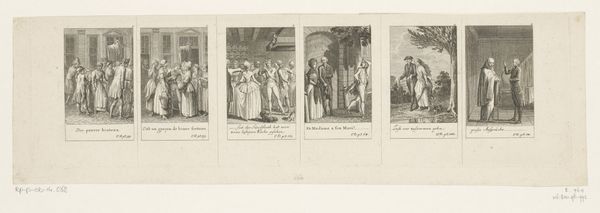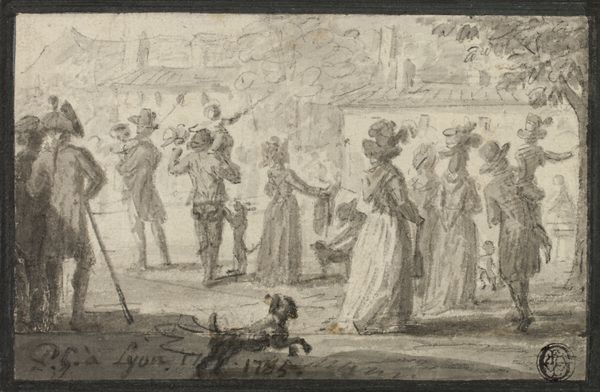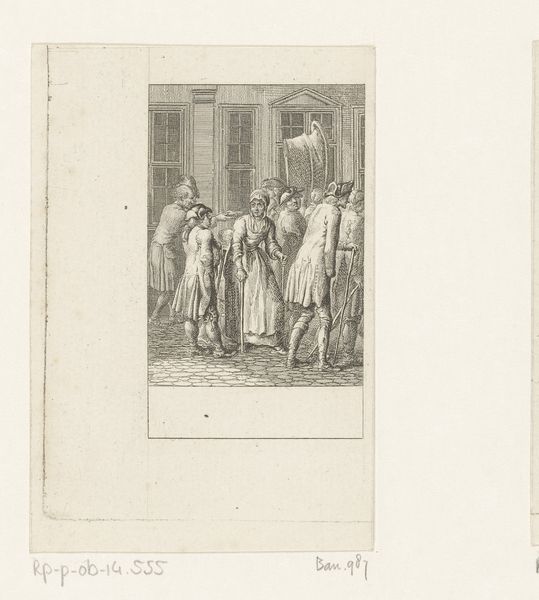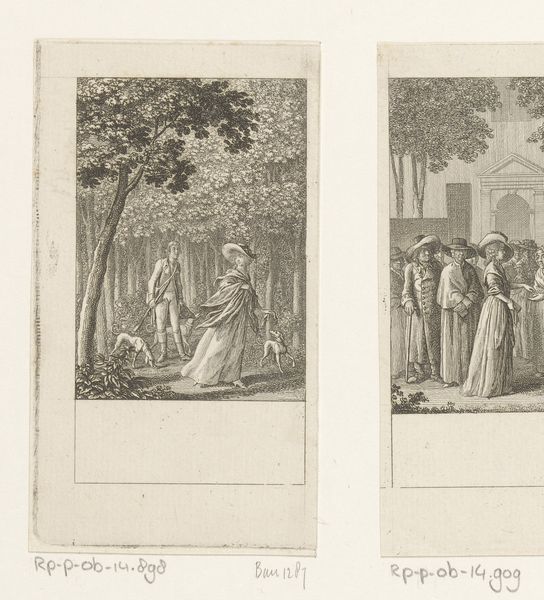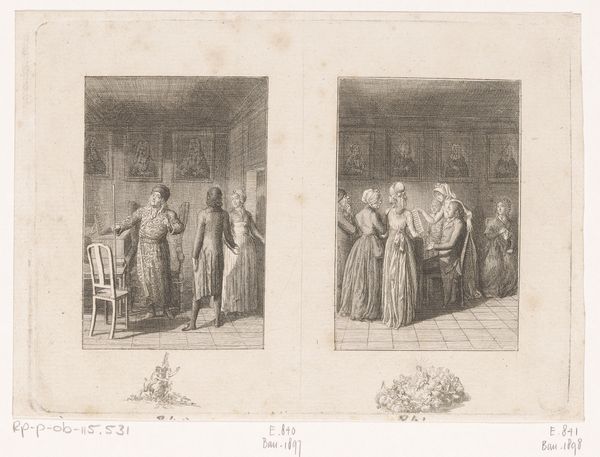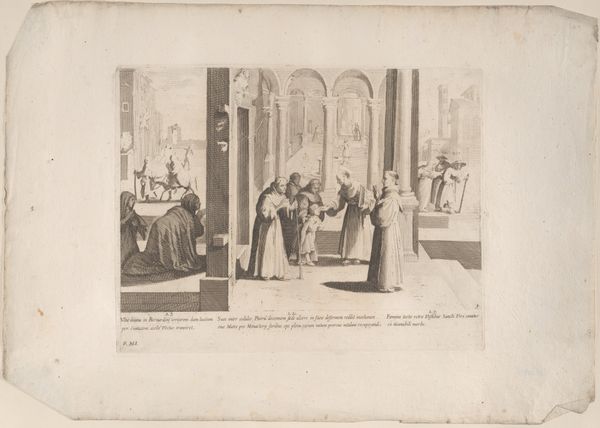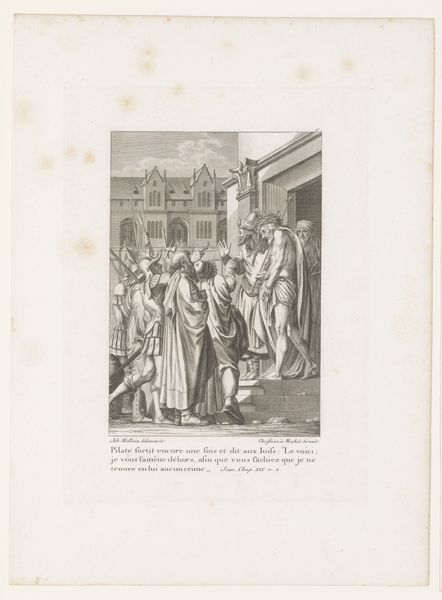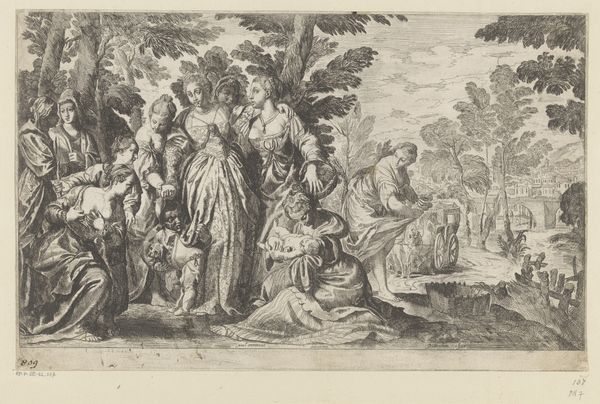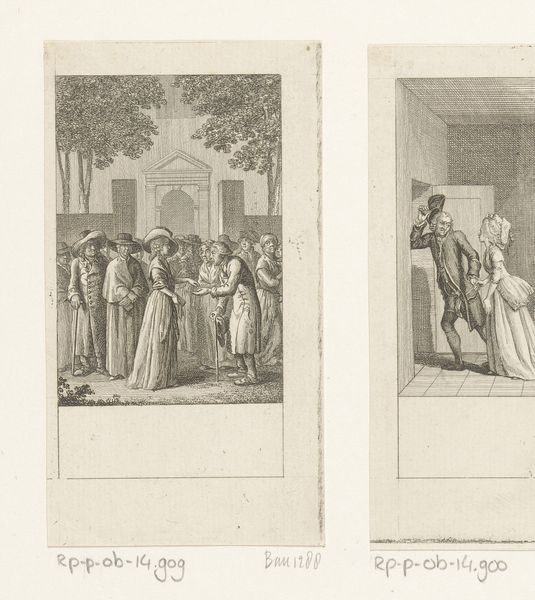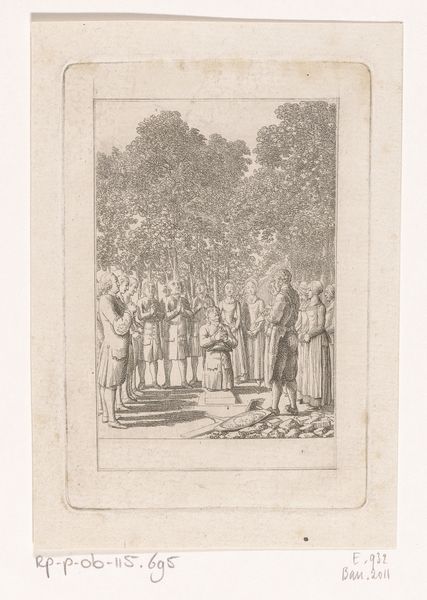
drawing, paper, ink, pen
#
drawing
#
neoclacissism
#
aged paper
#
toned paper
#
mechanical pen drawing
#
sketch book
#
landscape
#
figuration
#
paper
#
personal sketchbook
#
ink
#
pen-ink sketch
#
pen work
#
sketchbook drawing
#
pen
#
genre-painting
#
storyboard and sketchbook work
#
sketchbook art
Dimensions: height 197 mm, width 269 mm
Copyright: Rijks Museum: Open Domain
Editor: This pen and ink drawing is titled "Groep mannen en vrouwen voor een fontein," placing a Group of Men and Women Before a Fountain. It’s by Louis Ducros and thought to be from around 1758-1810. The figures are carefully posed in what appears to be a Neoclassical landscape, almost staged. How do you interpret this seemingly serene scene? Curator: Well, on the surface, it seems to depict leisure and perhaps, idealized social interactions, as was common in Neoclassical art. But, I’m curious about the context: what are these figures doing in front of this fountain? Notice their varied attire, suggesting different social standings. Is this image commenting on class distinctions, maybe through clothing? Who had access to these landscaped areas? The fountain, typically a public amenity, here it might function as a status symbol, marking privilege and ownership. Editor: That's a perspective I hadn't considered! I was so caught up in the composition I didn’t think about class. I suppose I assumed a somewhat idealized, classless society given the Neoclassical setting. Curator: Precisely. That very assumption speaks to the power of art to reinforce or question social norms. Does the positioning of the figures create any power dynamic? Where is the viewer standing? And does this angle normalize, celebrate or critique this societal landscape? Editor: It appears as though we're outsiders, like visitors watching this group of men and women interact near a fountain in what feels like a garden behind palace walls. We are peeking from outside the inner sanctum. So much information to extract just from observing the piece's place in time. I feel more conscious of my position when I consider what the people represented actually represent! Curator: Absolutely! And by situating this artwork within its socio-political context, we not only enrich our understanding but also challenge assumptions of whose stories get told, and from what perspectives. Considering who's present – and perhaps more importantly, who *isn't* – provides vital insight into the artwork's intended meaning. Editor: Thank you! I now feel a heightened responsibility to read into the context of a drawing like this when judging artwork on view to understand better how art of the Neoclassical movement often reinforced existing power structures rather than disrupting them.
Comments
No comments
Be the first to comment and join the conversation on the ultimate creative platform.
